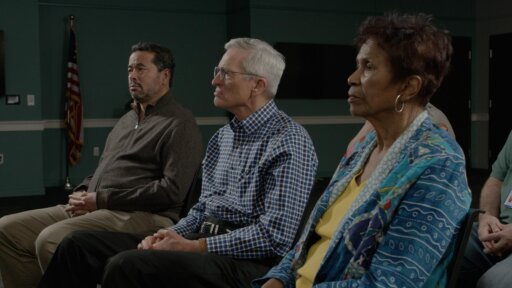Aided by University of Kentucky archaeologist Dr. Philip Mink and the university’s EduceLab Mobile Team, researchers examine the land around where the Simpsonville Massacre occurred, hoping to find the lost burial grounds of the slain soldiers.
Features
Archaeologists like to say “X never marks the spot,” but here we have a cross.
-We have a cross right there.
-We have a cross.
[laughs] And this gives us a whole different set of information that we can start looking at.
With their second target area selected, Phil calls in the EduceLab mobile team from the University of Kentucky.
Their tools will give him a look below the surface of the mound in the middle of the Simpsonville field.
So, the first thing we're going to do is take out the drones.
They can cover a much larger area at slightly lower precision.
And then, based on those results, we're hoping that there'll be some areas that we can then target with the terrestrial GPR.
Well, it's good that you were here now because in two months, that ryegrass is gonna be five feet high.
I- I just, I can't wait to see what it shows us.
I'm all smiles.
I'm ready to see some action now.
This orange box contains a ground-penetrating radar transmitter.
Skimming the search area from less than a meter above, it can ‘read the ground up to two meters below its surface.
It's heading out and it's now programmed and it's beginning to collect that data.
It'll go much quicker, much faster than when were hand pushing it.
Now this is a great perspective on that site because, from the road and I've been on that road thousands of times you can't see that hump.
But you can here.
You can slightly see that hump there.
And so yeah, no, that's that's great.
After the GPR covers roughly 2,000 square meters, the team turns to a magnetometer capable of sensing objects like bullets, belt buckles, and bayonets buried in the ground.
With the wide-scale data gathering complete, Phil now brings out his high-resolution terrestrial GPR.
He'll examine the mound in 50-centimeter increments.
He and his team will need days to analyze the data collected from the cemetery in the field.
But if there are any anomalies to be found at either site, these tools will have picked them up.
It's the best chance yet at finally finding this lost burial site.
Now, the wait begins.


